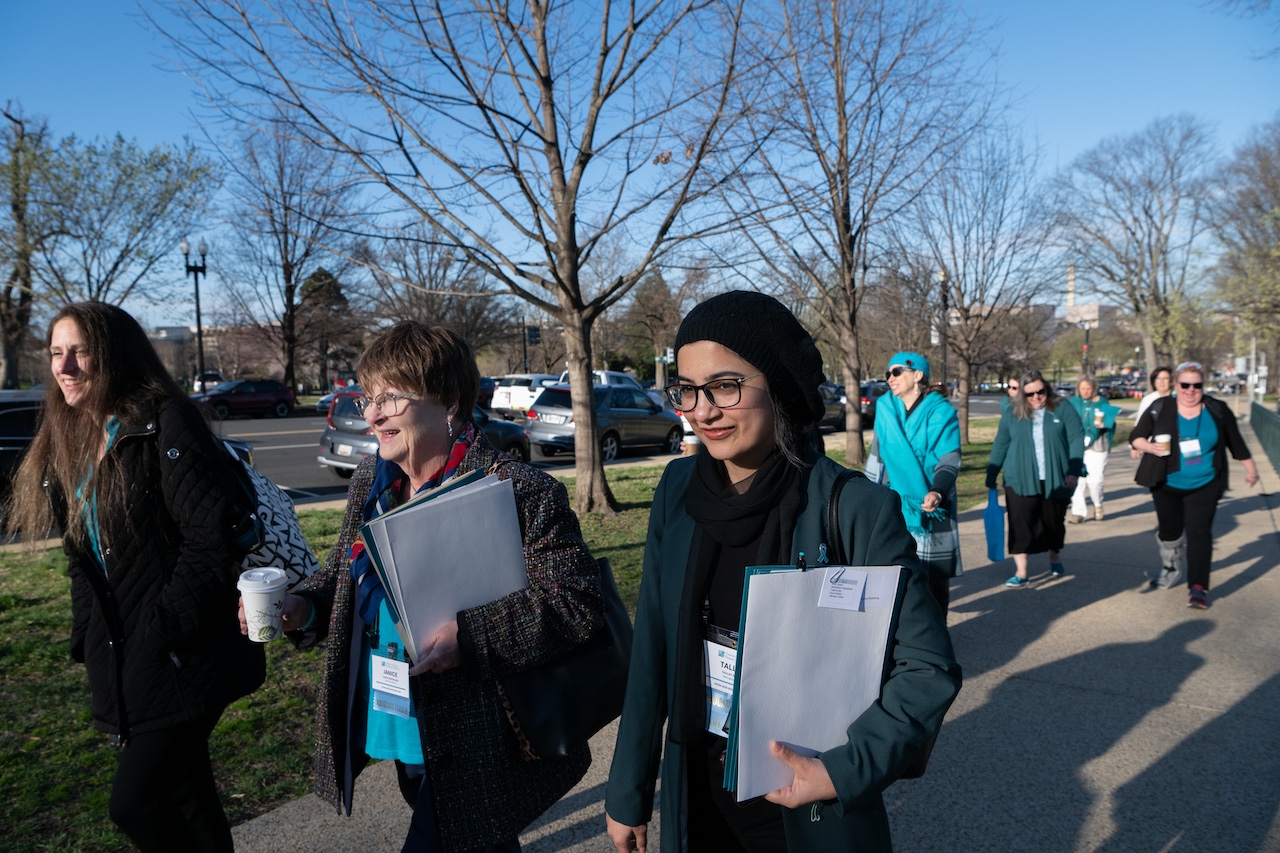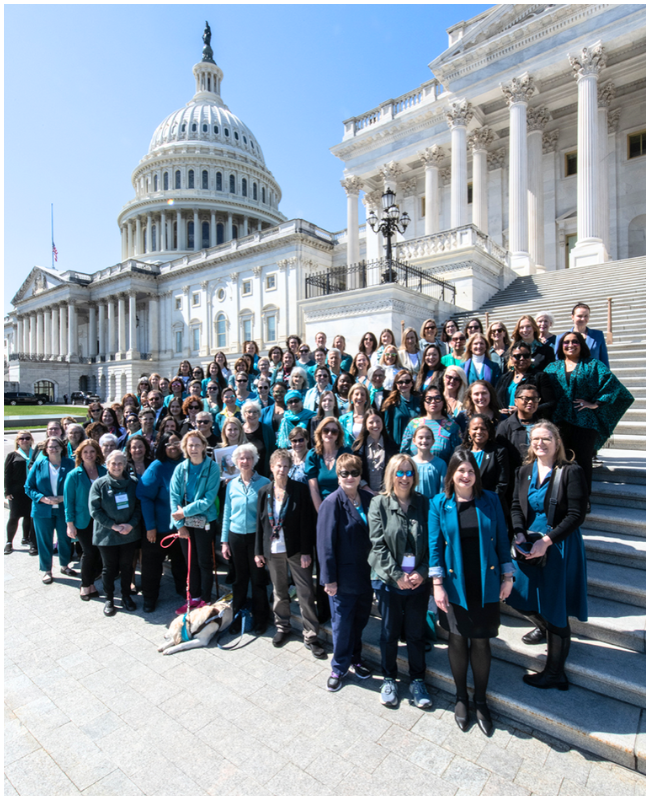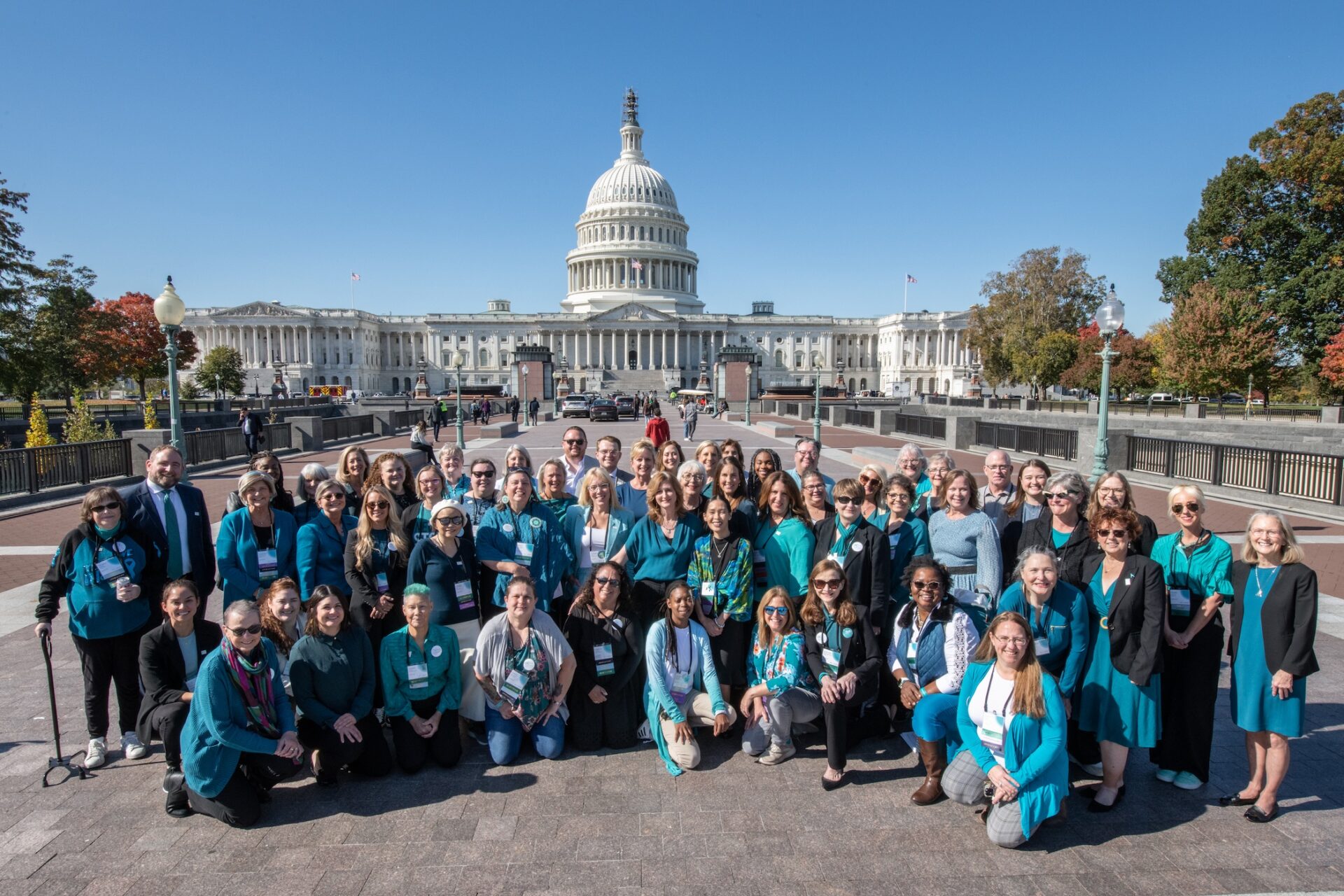ASCO 2015 Report
By Katie Hoody
My mom passed away on May 23 following a courageous three-year journey with ovarian cancer. The day after her funeral, I boarded a plane to Chicago to attend the ASCO conference on a generous scholarship provided by sponsors of the Research Advocacy Network. As I packed my suitcase that morning, I wondered if I was making the right decision to leave my family just as we were beginning to grieve the loss of my mom. Would I be in the right frame of mind to absorb and engage with the information presented in the educational sessions? The moment the first session I attended began, I knew that the next few days would bring healing, hope, and increased commitment to help create a better future for women diagnosed with ovarian cancer. What follows is a brief account of some of the highlights of the sessions I attended during the ASCO conference.
During the session “Managing Ovarian Cancer in the Older Woman,” Dr. Linda Duska clarified that studies typically define “elderly/older patients” as those who are either older than 65 or older than 70 at the time of their cancer diagnosis. In ovarian cancer patients, the best surgical outcome is no gross residual disease or NGR. Attaining NGR usually requires surgeries that are long and complicated, and therefore may be especially difficult for older women to endure. As Dr. Duska noted, older patients have more complications and more early death after any abdominal surgery, whether it is for ovarian cancer or another reason. Though Dr. Duska did not recommend against surgery for older women diagnosed with ovarian cancer, she did state that surgery will not increase overall survival unless it is followed by chemotherapy. Thus, if a patient is too frail to receive chemotherapy, surgery is most likely not a good option for her.
In the same session, Dr. Kathleen Moore described a series of studies on Elderly Women and Ovarian Cancer (EWOC). Dr. Moore reiterated Dr. Duska’s statement that outcomes for ovarian cancer patients worsen as their age increases. Dr. Moore added that older women are more likely to terminate chemotherapy early, often due to intolerable side effects. She explained that depression is strongly correlated with both increased toxicity of chemotherapy and decreased overall survival, and she stated that depression was the most important indicator of poor prognosis in two of the EWOC studies. In addition, social isolation (which often goes hand-in-hand with depression) seems to have an impact on whether a patient completes a chemotherapy regimen. Dr. Moore also noted that weekly chemotherapy generally seems less toxic to older patients than chemotherapy given at higher doses every three weeks.
Dr. William Tew discussed the importance of enrolling more geriatric patients in clinical trials. Though an increasing percentage of cancer patients are over the age of 65, the age distribution of patients participating in clinical trials has remained nearly the same for over a decade. Presently, well over half of cancer patients are over the age of 65, but only about a third of participants in clinical trials are over the age of 65. Thus, researchers are generally studying patients who are younger and fitter than the average patient. Dr. Tew pointed to a report by the Institute of Medicine which calls for the development of geriatric oncology based datasets, rather than just relying on studies of younger patients, in order to determine whether older patients have different treatment outcomes. Dr. Tew discussed how careful selection of eligibility requirements, interventions, study endpoints, and trial designs might increase the likelihood that older patients will participate in trials. Additionally, Dr. Tew cited a study that found that only 35% of patients over the age of 65 are offered clinical trials by their doctors, whereas 51% of those under the age of 65 are offered trials. Simply offering clinical trials to more patients over the age of 65 could go a long way toward increasing this population’s participation in trials.
I was excited to hear Dr. Usha Menon’s comments on the UK Collaborative Trial of Ovarian Cancer Screening (UKCTOCS) during the session entitled “Value Concepts in the Management of Ovarian Cancer.” Before discussing the study, Dr. Menon provided some interesting background information about the development of high-grade serous ovarian cancers, which account for about 75% of ovarian cancers. High-grade serous cancers tend to be detected at a later stage than other types of ovarian cancer, and there is growing evidence that at least 50% of these cancers actually begin in the fallopian tubes, rather than in the ovaries. Dr. Menon stated that these cancers typically spend more than four years in stage I and II disease, with tumor sizes of less than 1 cm in diameter, and then about one year at stage III or IV disease before becoming clinically apparent, usually when tumors have reached a diameter of around 3 cm. Thus, Dr. Menon said the search for ovarian cancer screening tools is best described as an attempt to locate low volume disease. In order to detect the small tumors present in early stages of the disease, we will likely need to discover cancer-specific biomarkers and perhaps need approaches beyond traditional blood protein biomarkers.
The UKCTOCS study followed over 200,000 women (age 50-74) divided into three study arms: control group / no screening (100,000 women); CA-125 screening (50,000 women); and transvaginal ultrasound screening (50,000 women). Though final results of the study are still pending, Dr. Menon said that results so far suggest that there may be some benefit to screening women using annual CA-125 tests interpreted according to an algorithm developed for the study. The CA-125 + algorithm protocol detected 85% of ovarian cancer cases in women screened in that arm of the study. There were, however, false positives as well. For every 4.8 operations performed according to the protocol, only one woman actually had ovarian cancer, meaning that some surgeries were performed unnecessarily. The transvaginal ultrasound arm of the study fared much worse in this regard, which suggests that transvaginal ultrasounds are not reliable as a screening tool for ovarian cancer. The final results of the UKCTOCS study, expected out later this year, will indicate whether there was any survival benefit in the CA-125 arm of the study.
Dr. Menon reminded the audience that even though the CA-125 + algorithm method may show some promise, cut-off screening methods have been proven ineffective and unreliable in the detection of ovarian cancer. Cut-off screening methods select a certain CA-125 level (often >35) as a marker for ovarian cancer. In contrast, algorithm methods attempt to interpret changes that are relevant to a particular woman, based on the trends of her past CA-125 levels. In the UKCTOCS study, 53% of the women who were found to have invasive epithelial ovarian cancer had CA-125 levels lower than 35 at diagnosis. These cases would not have been detected without the use of the algorithm.
In the same session, Dr. Douglas Levine discussed current trends in personalized treatment for ovarian cancer. Though we now have treatments (PARP inhibitors, such as Lynparza) to target BRCA1 and BRCA2 mutations, scientists are not yet sure how to target other mutations present in ovarian cancer tumors. With further study, it is hoped that additional mutations may be used for risk assessment and also to identify which patients will respond to particular treatments. In general, increased mutation rates within a tumor are associated with greater platinum sensitivity, meaning that tumors with more mutations respond better to platinum therapies and are also more likely to respond to checkpoint blockades which are being developed to treat a variety of cancers. In his comments on multi-gene testing panels, Dr. Levine noted that while the panels can detect many mutations, few of these are clinically actionable at present, meaning that we do not yet have treatments to target the mutations, and we often do not even know how important a particular mutation is in the development of cancer. Thus these testing panels, which can cost several thousand dollars, may not provide much benefit to a patient at this point. Dr. Levine concluded his talk with a short discussion of Circulating Tumor DNA (ctDNA). With further study, ctDNA might become a valuable biomarker for ovarian cancer used to assess surgical outcomes and to monitor for response to therapy and disease recurrence.


